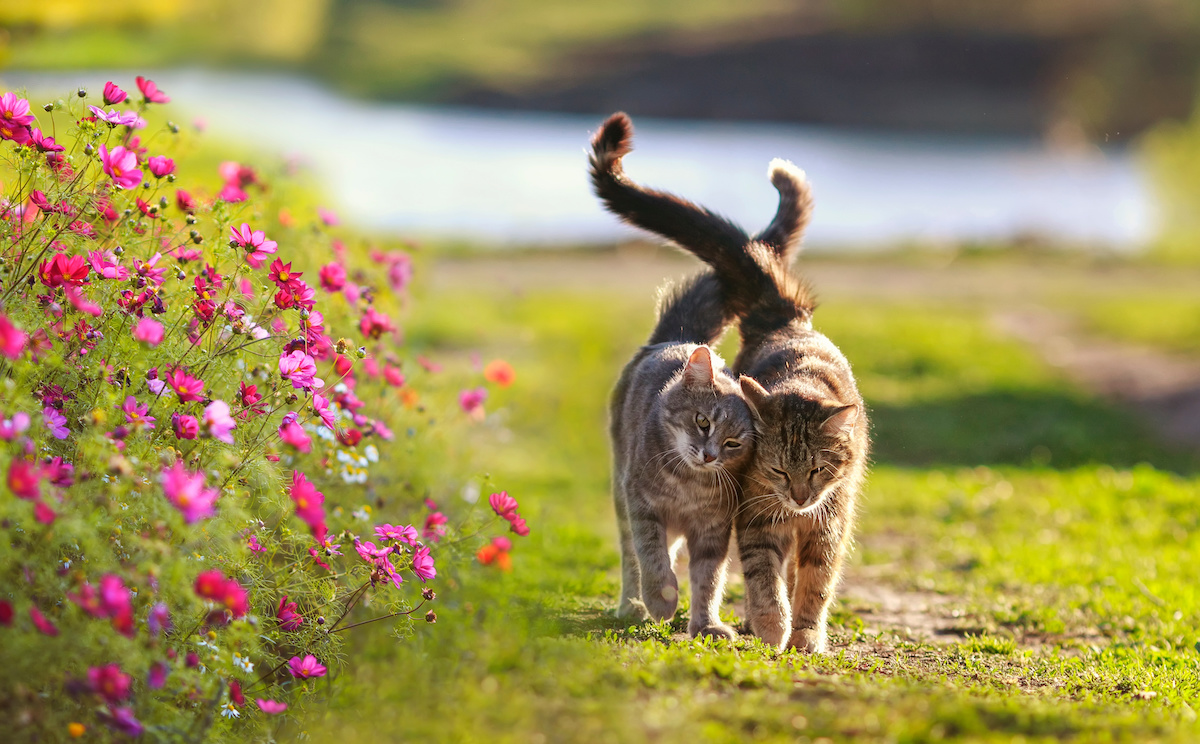If you have a cat or are considering getting one, you’ve probably already researched the best food. You likely already explored the different types of cat litter available, and found some toys that your fluffball is sure to love. These things will make your cat happy in your home, but your job as a responsible pet owner isn’t over yet. This is especially true when it comes to felaine leukemia.
You need to plan for your cat’s health. This includes things like finding a veterinarian and keeping your kitty up to date on their shots. But it’s also important to understand the warning signs of feline leukemia virus.
Feline leukemia is extremely common. In fact, it’s the second leading cause of death in cats, killing 85% of untreated animals within 3 years. However, it doesn’t have to be a death sentence for your cat. By learning about feline leukemia you can help your cat live a long healthy life.
This article covers everything you need to know about feline leukemia, including how you can protect your cat from contracting the virus, the symptoms to watch for, and the treatment options available.
What is Feline Leukemia Virus?
Feline leukemia virus (FeLV) is a viral disease found in cats. The virus transmits through bodily fluids such as saliva, blood, urine, or feces. It affects only cats. It cannot spread to humans, dogs, or other animals.
The virus works by attacking and suppressing the immune system of the cat. It usually leads to various forms of cancer. However, it can also cause a variety of other health problems such as:
- Anemia
- Intestinal inflammation
- Neurological diseases
- Eye diseases
- Blood disorders
- Severe Infections
Feline leukemia is not curable. But the symptoms are manageable by treating secondary infections, especially when caught early.
Signs and Symptoms of Feline Leukemia Virus
Cats who contract FeLV may never suffer from any health problems and go on to live a relatively normal life. Others may begin to develop symptoms as early as 2-4 weeks after exposure and battle continuous infections throughout their life.
Every cat handles the virus differently, however, there are some common symptoms. Keep an eye out for the following signs:
- Pale or puffy gums
- Loss of appetite or unexplainable weight loss
- Enlarged lymph nodes
- Yellowing in the whites of the eyes or other eye conditions
- Diminishing quality of fur
- Increasing infections such as bladder, skin, or respiratory infections
- Persistent fever or diarrhea
- Change in behavior, seizures, or other neurological symptoms
- Weakness or lethargy
- Reproductive problems
- Anemia
- Enlarged spleen
- Poor growth in kittens – FeLV can stunt the growth of kittens and delay their ability to grow out of kittenhood. Kittens born to a FeLV-positive mother may be infected before they are born.
- Cancer – FeLV can cause cancer in any organ in the cat’s body. The most common cancers caused by FeLV are leukemia, lymphoma, and sarcoma.
How Do Cats Get Feline Leukemia?
FeLV can be transmitted in several ways. Most cats get the virus from the blood or saliva of an infected cat through bite wounds or mutual grooming. It can potentially be spread through shared feeding bowls or litter boxes, but this is rare.
Outdoor cats have a higher risk of contracting FeLV through contact with other infected cats. But even indoor cats could potentially be infected if they slip out the door undetected. You also need to be aware if your cat spends time in a boarding facility, groomer, or other shared space.
Feline leukemia virus can transmit to kittens by their mother during pregnancy or through nursing. However, those kittens can still lead a long healthy life with proper care.
Treatment for FeLV infection
Although some treatments have been shown to reduce the level of FeLV in infected cats, these medications have severe side effects and may not be effective in all cases. Instead, veterinarians usually prefer to treat complications of FeLV as they arise. This could be anything from prescribing antibiotics for infections or performing a blood transfusion to treat severe anemia.
There is no cure for feline leukemia, however, some ats can live their entire life without any complications from the disease. Cats who do develop health issues can still live a relatively normal life by treating secondary infections. However, if left untreated, most cats typically die within 3 years of contracting the virus.
Preventing Feline Leukemia
Any cat can contract FeLV, although kittens and adults with poor immune systems are most at risk.
The best way to prevent FeLV is through early vaccination. You should vaccinate your kitten for FeLV between six and eight weeks of age, and then again between nine and 12 months of age. Information on FeLV vaccination is included in your kitten’s first round of vaccinations. Adult cats can also be vaccinated as long as they haven’t already contracted the disease. Vaccinating an already infected cat will not treat the disease or prevent its spread.
While no vaccine is 100% effective, it has been found that unvaccinated cats with bite wounds were 7.5 times more likely to contract FeLV than vaccinated cats with bite wounds. Although proper vaccination can help protect your cat from FeLV, you should still have your vaccinated cat tested. This is especially true if you know they have been in close contact with an infected cat.
In addition to vaccinating your cat, you can help protect them from feline leukemia by keeping them indoors and away from other felines.
If you plan on introducing a new cat into your home, it’s important to know whether the new cat is FeLV-positive. It’s even more important if you have other cats in your home. You can find out if a cat is infected with FeLV through a simple blood test conducted by your veterinarian.
If a cat is found to have feline leukemia, it can safely live with other FeLV-infected cats. However, any uninfected cats would be at risk of catching the disease, even if they have their shots, so they should be kept indoors if possible.
Can FeLV-Positive Cats Live a Happy Life?
Absolutely! FeLV-positive cats can lead a long happy life. But you must be extra vigilant to keep them as healthy as possible. Because FeLV affects the immune system, any infection or disease your cat gets will likely be more severe than it would be in a healthy cat. It’s important to keep up with routine vet care and pay close attention to any signs of infection or illness.
Conclusion
There are many misconceptions about feline leukemia. It is important to remember that the transmission of this virus is through direct contact between cats. It cannot transmit to humans, dogs, or other species of animals.
Early vaccination is the best line of defense against this disease. However even vaccinated pets should be kept away from high-risk cats such as unvaccinated cats, strays, or other outdoor cats.
FeLV-positive cats cannot be cured, but they can still live a relatively normal life. Infected cats should be watched carefully for signs of infection or other illness and treated quickly. They can live with other infected cats however they should be kept indoors so they don’t infect other neighborhood cats.
If you are ready to bring a new cat of any age into your home contact the Animal Care Center to schedule Feline Leukemia testing and vaccinations for your new pet. We can answer any questions you may have about your new furry family member and teach you how to keep them safe, healthy, and happy.







